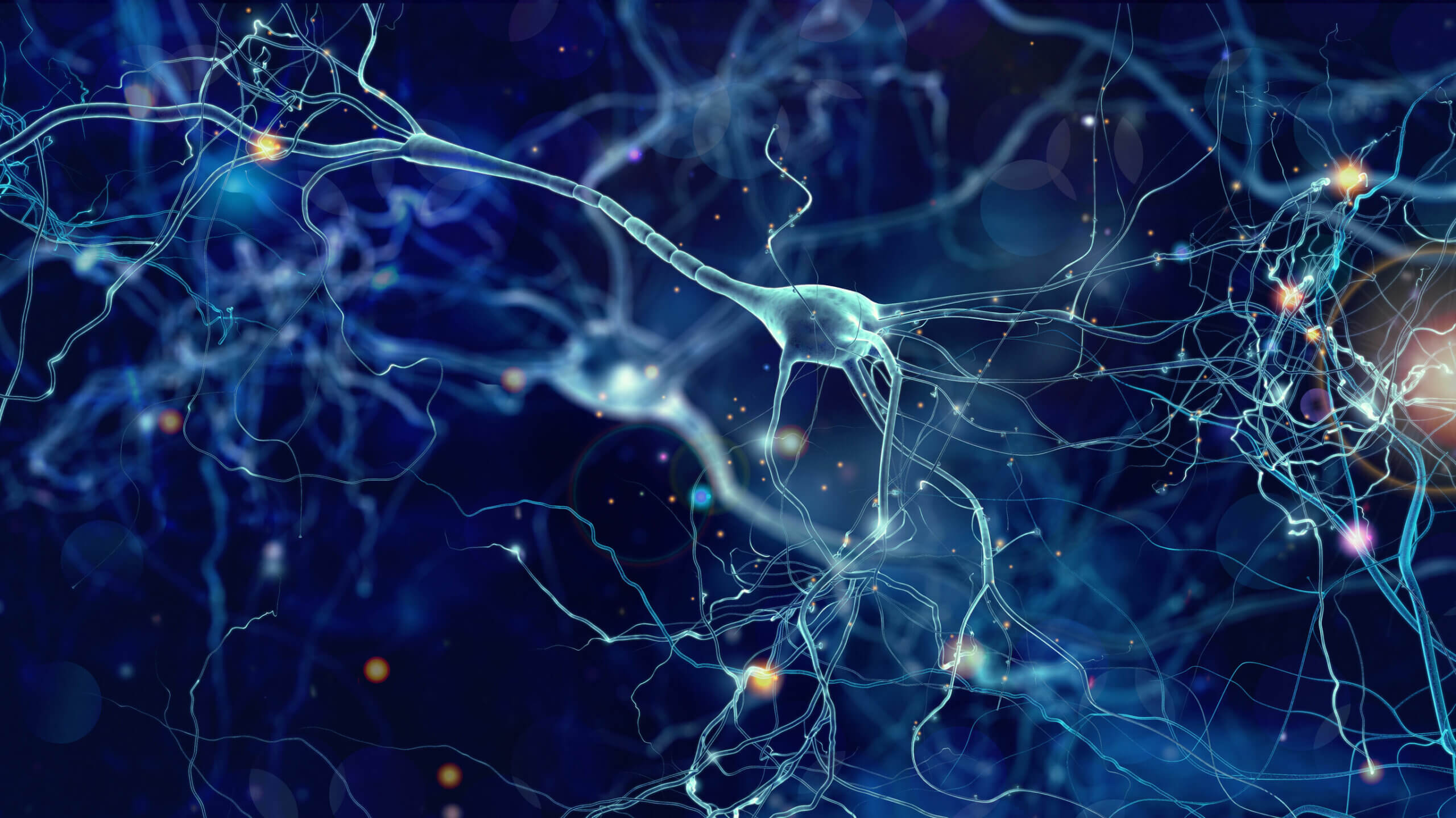The Differences Between Alzheimer's and Parkinson's


Escrito y verificado por el biólogo Samuel Antonio Sánchez Amador
According to the World Health Organization (WHO), the percentage of people aged over 60 years will nearly double between 2015 and 2050, from 12% to 22%. This is why certain neuropsychiatric diseases will become increasingly common and will require further investigation. This key knowledge goes through identifying the differences between Alzheimer’s and Parkinson’s, for example.
In addition to this, it’s necessary to highlight that 80% of the elderly will live in the future in low- or middle-income countries, and therefore, learning about the diseases of the elderly is essential to establish viable and economical treatments. Dementia associated with old age is one of the greatest health emergencies in this area, affecting more than 40 million people.
The population aging pattern is much faster than in the past, and being prepared for the new health challenges that involve a higher prevalence of the elderly is a must. Learn with us the key differences between Alzheimer’s and Parkinson’s in the following lines.
Overview of dementia and its associated diseases
Before analyzing in depth the differences between Alzheimer’s and Parkinson’s, we’ll see that it’s essential to explore a term closely related to both: Dementia. As the Alzheimer’s Association indicates, dementia is a general term that describes a series of symptoms associated with impaired memory and other thinking skills.
The clinical signs of dementia usually appear slowly and persistently and show damage to brain structures. The WHO and other sources help us to contextualize the epidemiological burden of these syndromes in the following list:
- Dementia involves impaired memory, intellect, behavior, and the ability to perform daily activities. It affects 48.3 million people worldwide and 58% of those affected are in middle-income countries.
- The prevalence of dementia varies according to the region, being 4.7% of the population in Europe and 8.7% in Africa.
- Each year, dementia claims more than 2 million lives, a figure far higher than those reported decades ago.
- Alzheimer’s disease is the most common form of dementia, accounting for 60-70% of total cases.
- Each year, 9.9 million new patients are diagnosed with dementia.
With all these data, it’s easy to imagine why it’s necessary to study in depth the conditions that lead to the onset of dementia. Based on this idea, we’ll present the most important differences between Alzheimer’s and Parkinson’s in the following lines. Keep reading.
What are the differences between Alzheimer’s and Parkinson’s?
Both Parkinson’s disease (PD) and Alzheimer’s disease (AD) can disrupt the way the brain works. In any case, the disparities between both clinical pictures are multiple. We’ll analyze them separately in different categories.
1. The pathological mechanism of both diseases is different

We’ll start by defining both conditions. As the Mayo Clinic indicates, Alzheimer’s disease is a “neurological disorder that causes brain atrophy and the death of neurons.” As we’ve said in previous lines, it’s the most common cause of dementia (in 7 out of 10 cases) and its etiology is explained by a malfunction of brain tissue proteins.
Alzheimer’s disease is characterized by the abnormal deposition of neuritic plaques and neurofibrillary tangles. The first formations are spherical microscopic lesions that have an extracellular nucleus of beta-amyloid peptide. On the other hand, neurofibrillary tangles are intracytoplasmic structures that are formed within neurons from a protein called tau.
Quickly and simply put, the presence of neuritic plaques and neurofibrillary tangles in brain tissue causes the connectivity between neurons to decrease. Over time, brain functionality is lost, as cells are damaged and die, irreversibly affecting the functionality of thought.
At the same time, the same source cited defines Parkinson’s disease as “a progressive condition of the nervous system that mainly affects movement.” This nerve dysfunction is due to the accumulation of alpha-synuclein in various parts of the brain, a protein that predominates in presynaptic nerve endings.
Recently, it has been proposed that the pathological accumulation of the protein in various parts of the brain may respond to a certain genetic predisposition, such as the existence of mutations in the PARK1 and PARK4 genes. Be that as it may, synuclein accumulates in cells due to misfolding and becomes cytotoxic, leading to the death of neurons and astrocytes.
Although all of these terms may sound very complex, we want the main idea to be as follows. At the cellular level, Alzheimer’s disease is characterized by the presence of neuritic plaques and neurofibrillary tangles, while Parkinson’s causes the accumulation of alpha-synuclein. Both events lead to neuronal death.
Both diseases are caused by the accumulation of certain substances in the brain. The histological differences between Alzheimer’s and Parkinson’s respond to the abnormal proteins that are established in the tissues.
2. The stages of each disease are different
As the Alzheimer’s Diseaseportal indicates, the first symptoms and progression of each disease are very different. Alzheimer’s begins with memory loss, while Parkinson’s manifests with motor difficulties. Let’s take a look at the phases of each disease separately.
The phases of Alzheimer’s disease
Alzheimer’s disease is usually categorized into 3 different stages, although there are also certain early-onset symptoms. We’ll tell you about them in the following list:
- Pre-clinical phase: Changes in the brain begin long before the disease manifests itself. Brain degeneration can take place for years without the patient realizing it. Most of the early symptoms are usually associated with age and stress and are shown as subtle difficulties when carrying out certain processes.
- Mild and early stage: In this phase, the patient begins to notice that they forget things more easily. It’s possible to live independently, although there are certain symptoms such as difficulty remembering names, narrating past events, making plans, staying organized, and controlling monetary accounts, among other things.
- Medium and moderate stage: This is the longest phase and can be established for several years. Common symptoms are increasing difficulty remembering, noticeable trouble learning new things, difficulty planning events, the inability to recognize one’s own name, and severe problems writing, reading, or doing math.
- Final and severe phase: At this point, the patient is entirely dependent on external care. They lose the ability to walk, sit, eat, control their bowels, and speak properly, among many other things. A person with end-stage Alzheimer’s is not aware of their surroundings and their own being and requires help to carry out any activity.
The causes of death in this disease are usually related to respiratory tract infections (such as pneumonia) and ulcers due to lack of movement, not neuronal damage per se. In summary, this disease manifests itself mainly in the areas of cognition and memory.
The phases of Parkinson’s disease
Like what happens with Alzheimer’s, the signs and symptoms of Parkinson’s disease are different for each person. In any case, it should be noted that this disease manifests itself earlier with motor dysfunction, although it also ends up affecting cognitive and memory processes. According to sources already cited, 50 to 80% of patients develop dementia in the pathological course.
The phases of Parkinson’s disease are as follows:
- Phase 1: In this stage, the patient has mild symptoms that don’t make it difficult to perform daily tasks. Tremors (jerky muscle contractions) are one of the initial clinical signs, but it only occurs on one side of the body. Slight changes in posture, movement, and facial expressions can also be observed.
- Phase 2: Symptoms get worse with disease progression. Tremor and stiffness spread to both sides of the body, while difficulty walking and postural problems become even more apparent. The patient can still live alone, but the daily tasks get complicated.
- Stage 3: At this point, the patient is in the middle of the course of their illness. Loss of balance and reduced speed of movement are the most telling symptoms, although complete independence is maintained.
- Stage 4: The clinical signs are severe and limit the capabilities of the patient. They can stand on their own, but the movement often requires artificial support. At this point, constant medical assistance is needed to perform most of the daily tasks.
- Stage 5: In the later stage of the disease, stiffness of the limbs often prevents the patient from standing up. Apart from having to use a wheelchair and requiring constant assistance, psychiatric symptoms make their way here. Hallucinations, depression, sleep disorders, anxiety, and psychosis are very common.
In summary, we can mention that another of the differences between Alzheimer’s and Parkinson’s is the onset of symptoms. Although both conditions usually lead to a scenario of psychiatric dementia, Alzheimer’s is characterized by cognitive and memory symptoms, while Parkinson’s first presents with movement failures.
3. Different epidemiological figures
Alzheimer’s and Parkinson’s are the two most common types of neurodegenerative diseases in the world, but the former prevails over the latter. As indicated by the Statpearls medical portal, 5 to 8 people per 1000 have Alzheimer’s, while this figure drops to 1-2 patients per 1000 inhabitants with Parkinson’s.
In any case, both conditions are associated with age and the passage of time. For example, the probability of suffering from Alzheimer’s is doubled every 5 years after 65 years of age, going from 3 patients to 69 per 1000 inhabitants in the geriatric population. Something similar happens with Parkinson’s, as the probability of presenting it is 1% at 60 years and 4% at 80.
Be that as it may, it’s estimated that at least 50 million people in the world live with some type of dementia, be it derived from Alzheimer’s, Parkinson’s, or another condition. If no effective cures or ways to delay disease are discovered, it’s believed that by 2050, there will be 152 million geriatric patients with a condition of this type on the planet.
The aging of the population has as a consequence a clear increase in the prevalence of neurodegenerative diseases.
4. The treatment of both clinical pictures is different

On this front, it should be noted that neither Parkinson’s nor Alzheimer’s has a cure. However, certain medications are prescribed to slow disease progression and reduce the severity of associated symptoms. To conclude, we’ll explore the treatment of each condition separately.
Alzheimer’s treatment
Cholinesterase inhibitors are the main drugs of choice to combat this disease. Simply put, these drugs increase levels of acetylcholine, a compound used by nerve cells to communicate with one another. Within this group, the most widely used are donepezil, rivastigmine, and galantamine.
Donepezil can be used in all stages of the disease, while rivastigmine and galantamine are reserved for advanced cases of dementia.
At the same time, use is also made of memantine, a drug from the group of NMDA receptor antagonists. This compound reduces the amount of calcium that builds up within nerve cells, thus helping to reduce abnormal brain activity. It’s used to treat the advanced stages of Alzheimer’s, in which there’s usually depression, anxiety, and psychosis.
Parkinson’s treatment
While in Alzheimer’s, the aim is to increase acetylcholine levels in the brain circuit, in Parkinson’s the goal is the same with dopamine. This neurotransmitter can’t be administered directly, and as a response, the drug duo carbidopa-levodopa is used, which promotes the conversion of chemicals to dopamine within the brain.
Most of the drugs that treat Parkinson’s disease report very positive effects during the first 3-6 years, but then their effectiveness is greatly reduced. In general, younger patients are treated much more aggressively than older patients, as a better response is expected.
Unlike the treatment of Alzheimer’s, in the approach to Parkinson’s, special emphasis is placed on psychomotor therapy. For example, it’s possible to teach patients to manage their disease, encouraging the use of techniques to maintain balance, posture, and an active life. In addition, many other drugs can be used to treat specific motor symptoms.
In Alzheimer’s, the aim is to increase acetylcholine levels, while in Parkinson’s, the objective is dopamine. Both are neurotransmitters, but their role in brain function is different.
The two most common neurodegenerative diseases in the world
Despite the many differences that exist between Alzheimer’s and Parkinson’s, it’s necessary to emphasize that together, they represent the most common neurodegenerative disorders throughout the world. Although the process of neuronal degeneration is different and the initial symptoms vary, in the end, the death of brain cells ends up ending the autonomy of the patient in both diseases.
On average, people with Alzheimer’s live between 3 and 11 years after diagnosis, while Parkinson’s patients report a life expectancy of about 11.8 years. These figures show that we still have a lot to know about these diseases, as death is inevitable in both cases, no matter how much it may be delayed with certain medications.
As the general population ages, dementia will become more and more common. The race against time continues and, luckily, neurodegenerative diseases are becoming better known. At this point, we can hope that one day a cure will be discovered.
According to the World Health Organization (WHO), the percentage of people aged over 60 years will nearly double between 2015 and 2050, from 12% to 22%. This is why certain neuropsychiatric diseases will become increasingly common and will require further investigation. This key knowledge goes through identifying the differences between Alzheimer’s and Parkinson’s, for example.
In addition to this, it’s necessary to highlight that 80% of the elderly will live in the future in low- or middle-income countries, and therefore, learning about the diseases of the elderly is essential to establish viable and economical treatments. Dementia associated with old age is one of the greatest health emergencies in this area, affecting more than 40 million people.
The population aging pattern is much faster than in the past, and being prepared for the new health challenges that involve a higher prevalence of the elderly is a must. Learn with us the key differences between Alzheimer’s and Parkinson’s in the following lines.
Overview of dementia and its associated diseases
Before analyzing in depth the differences between Alzheimer’s and Parkinson’s, we’ll see that it’s essential to explore a term closely related to both: Dementia. As the Alzheimer’s Association indicates, dementia is a general term that describes a series of symptoms associated with impaired memory and other thinking skills.
The clinical signs of dementia usually appear slowly and persistently and show damage to brain structures. The WHO and other sources help us to contextualize the epidemiological burden of these syndromes in the following list:
- Dementia involves impaired memory, intellect, behavior, and the ability to perform daily activities. It affects 48.3 million people worldwide and 58% of those affected are in middle-income countries.
- The prevalence of dementia varies according to the region, being 4.7% of the population in Europe and 8.7% in Africa.
- Each year, dementia claims more than 2 million lives, a figure far higher than those reported decades ago.
- Alzheimer’s disease is the most common form of dementia, accounting for 60-70% of total cases.
- Each year, 9.9 million new patients are diagnosed with dementia.
With all these data, it’s easy to imagine why it’s necessary to study in depth the conditions that lead to the onset of dementia. Based on this idea, we’ll present the most important differences between Alzheimer’s and Parkinson’s in the following lines. Keep reading.
What are the differences between Alzheimer’s and Parkinson’s?
Both Parkinson’s disease (PD) and Alzheimer’s disease (AD) can disrupt the way the brain works. In any case, the disparities between both clinical pictures are multiple. We’ll analyze them separately in different categories.
1. The pathological mechanism of both diseases is different

We’ll start by defining both conditions. As the Mayo Clinic indicates, Alzheimer’s disease is a “neurological disorder that causes brain atrophy and the death of neurons.” As we’ve said in previous lines, it’s the most common cause of dementia (in 7 out of 10 cases) and its etiology is explained by a malfunction of brain tissue proteins.
Alzheimer’s disease is characterized by the abnormal deposition of neuritic plaques and neurofibrillary tangles. The first formations are spherical microscopic lesions that have an extracellular nucleus of beta-amyloid peptide. On the other hand, neurofibrillary tangles are intracytoplasmic structures that are formed within neurons from a protein called tau.
Quickly and simply put, the presence of neuritic plaques and neurofibrillary tangles in brain tissue causes the connectivity between neurons to decrease. Over time, brain functionality is lost, as cells are damaged and die, irreversibly affecting the functionality of thought.
At the same time, the same source cited defines Parkinson’s disease as “a progressive condition of the nervous system that mainly affects movement.” This nerve dysfunction is due to the accumulation of alpha-synuclein in various parts of the brain, a protein that predominates in presynaptic nerve endings.
Recently, it has been proposed that the pathological accumulation of the protein in various parts of the brain may respond to a certain genetic predisposition, such as the existence of mutations in the PARK1 and PARK4 genes. Be that as it may, synuclein accumulates in cells due to misfolding and becomes cytotoxic, leading to the death of neurons and astrocytes.
Although all of these terms may sound very complex, we want the main idea to be as follows. At the cellular level, Alzheimer’s disease is characterized by the presence of neuritic plaques and neurofibrillary tangles, while Parkinson’s causes the accumulation of alpha-synuclein. Both events lead to neuronal death.
Both diseases are caused by the accumulation of certain substances in the brain. The histological differences between Alzheimer’s and Parkinson’s respond to the abnormal proteins that are established in the tissues.
2. The stages of each disease are different
As the Alzheimer’s Diseaseportal indicates, the first symptoms and progression of each disease are very different. Alzheimer’s begins with memory loss, while Parkinson’s manifests with motor difficulties. Let’s take a look at the phases of each disease separately.
The phases of Alzheimer’s disease
Alzheimer’s disease is usually categorized into 3 different stages, although there are also certain early-onset symptoms. We’ll tell you about them in the following list:
- Pre-clinical phase: Changes in the brain begin long before the disease manifests itself. Brain degeneration can take place for years without the patient realizing it. Most of the early symptoms are usually associated with age and stress and are shown as subtle difficulties when carrying out certain processes.
- Mild and early stage: In this phase, the patient begins to notice that they forget things more easily. It’s possible to live independently, although there are certain symptoms such as difficulty remembering names, narrating past events, making plans, staying organized, and controlling monetary accounts, among other things.
- Medium and moderate stage: This is the longest phase and can be established for several years. Common symptoms are increasing difficulty remembering, noticeable trouble learning new things, difficulty planning events, the inability to recognize one’s own name, and severe problems writing, reading, or doing math.
- Final and severe phase: At this point, the patient is entirely dependent on external care. They lose the ability to walk, sit, eat, control their bowels, and speak properly, among many other things. A person with end-stage Alzheimer’s is not aware of their surroundings and their own being and requires help to carry out any activity.
The causes of death in this disease are usually related to respiratory tract infections (such as pneumonia) and ulcers due to lack of movement, not neuronal damage per se. In summary, this disease manifests itself mainly in the areas of cognition and memory.
The phases of Parkinson’s disease
Like what happens with Alzheimer’s, the signs and symptoms of Parkinson’s disease are different for each person. In any case, it should be noted that this disease manifests itself earlier with motor dysfunction, although it also ends up affecting cognitive and memory processes. According to sources already cited, 50 to 80% of patients develop dementia in the pathological course.
The phases of Parkinson’s disease are as follows:
- Phase 1: In this stage, the patient has mild symptoms that don’t make it difficult to perform daily tasks. Tremors (jerky muscle contractions) are one of the initial clinical signs, but it only occurs on one side of the body. Slight changes in posture, movement, and facial expressions can also be observed.
- Phase 2: Symptoms get worse with disease progression. Tremor and stiffness spread to both sides of the body, while difficulty walking and postural problems become even more apparent. The patient can still live alone, but the daily tasks get complicated.
- Stage 3: At this point, the patient is in the middle of the course of their illness. Loss of balance and reduced speed of movement are the most telling symptoms, although complete independence is maintained.
- Stage 4: The clinical signs are severe and limit the capabilities of the patient. They can stand on their own, but the movement often requires artificial support. At this point, constant medical assistance is needed to perform most of the daily tasks.
- Stage 5: In the later stage of the disease, stiffness of the limbs often prevents the patient from standing up. Apart from having to use a wheelchair and requiring constant assistance, psychiatric symptoms make their way here. Hallucinations, depression, sleep disorders, anxiety, and psychosis are very common.
In summary, we can mention that another of the differences between Alzheimer’s and Parkinson’s is the onset of symptoms. Although both conditions usually lead to a scenario of psychiatric dementia, Alzheimer’s is characterized by cognitive and memory symptoms, while Parkinson’s first presents with movement failures.
3. Different epidemiological figures
Alzheimer’s and Parkinson’s are the two most common types of neurodegenerative diseases in the world, but the former prevails over the latter. As indicated by the Statpearls medical portal, 5 to 8 people per 1000 have Alzheimer’s, while this figure drops to 1-2 patients per 1000 inhabitants with Parkinson’s.
In any case, both conditions are associated with age and the passage of time. For example, the probability of suffering from Alzheimer’s is doubled every 5 years after 65 years of age, going from 3 patients to 69 per 1000 inhabitants in the geriatric population. Something similar happens with Parkinson’s, as the probability of presenting it is 1% at 60 years and 4% at 80.
Be that as it may, it’s estimated that at least 50 million people in the world live with some type of dementia, be it derived from Alzheimer’s, Parkinson’s, or another condition. If no effective cures or ways to delay disease are discovered, it’s believed that by 2050, there will be 152 million geriatric patients with a condition of this type on the planet.
The aging of the population has as a consequence a clear increase in the prevalence of neurodegenerative diseases.
4. The treatment of both clinical pictures is different

On this front, it should be noted that neither Parkinson’s nor Alzheimer’s has a cure. However, certain medications are prescribed to slow disease progression and reduce the severity of associated symptoms. To conclude, we’ll explore the treatment of each condition separately.
Alzheimer’s treatment
Cholinesterase inhibitors are the main drugs of choice to combat this disease. Simply put, these drugs increase levels of acetylcholine, a compound used by nerve cells to communicate with one another. Within this group, the most widely used are donepezil, rivastigmine, and galantamine.
Donepezil can be used in all stages of the disease, while rivastigmine and galantamine are reserved for advanced cases of dementia.
At the same time, use is also made of memantine, a drug from the group of NMDA receptor antagonists. This compound reduces the amount of calcium that builds up within nerve cells, thus helping to reduce abnormal brain activity. It’s used to treat the advanced stages of Alzheimer’s, in which there’s usually depression, anxiety, and psychosis.
Parkinson’s treatment
While in Alzheimer’s, the aim is to increase acetylcholine levels in the brain circuit, in Parkinson’s the goal is the same with dopamine. This neurotransmitter can’t be administered directly, and as a response, the drug duo carbidopa-levodopa is used, which promotes the conversion of chemicals to dopamine within the brain.
Most of the drugs that treat Parkinson’s disease report very positive effects during the first 3-6 years, but then their effectiveness is greatly reduced. In general, younger patients are treated much more aggressively than older patients, as a better response is expected.
Unlike the treatment of Alzheimer’s, in the approach to Parkinson’s, special emphasis is placed on psychomotor therapy. For example, it’s possible to teach patients to manage their disease, encouraging the use of techniques to maintain balance, posture, and an active life. In addition, many other drugs can be used to treat specific motor symptoms.
In Alzheimer’s, the aim is to increase acetylcholine levels, while in Parkinson’s, the objective is dopamine. Both are neurotransmitters, but their role in brain function is different.
The two most common neurodegenerative diseases in the world
Despite the many differences that exist between Alzheimer’s and Parkinson’s, it’s necessary to emphasize that together, they represent the most common neurodegenerative disorders throughout the world. Although the process of neuronal degeneration is different and the initial symptoms vary, in the end, the death of brain cells ends up ending the autonomy of the patient in both diseases.
On average, people with Alzheimer’s live between 3 and 11 years after diagnosis, while Parkinson’s patients report a life expectancy of about 11.8 years. These figures show that we still have a lot to know about these diseases, as death is inevitable in both cases, no matter how much it may be delayed with certain medications.
As the general population ages, dementia will become more and more common. The race against time continues and, luckily, neurodegenerative diseases are becoming better known. At this point, we can hope that one day a cure will be discovered.
- Envejecimiento y salud, OMS. Recogido a 28 de agosto en https://www.who.int/es/news-room/fact-sheets/detail/envejecimiento-y-salud
- ¿Qué es la demencia? Alzheimers Association. Recogido a 28 de agosto en https://www.alz.org/alzheimer-demencia/que-es-la-demencia?lang=es-MX
- Demencia, OMS. Recogido a 28 de agosto en https://www.who.int/es/news-room/fact-sheets/detail/dementia
- Enfermedad de Alzheimer, Clínica Mayo. Recogido a 28 de agosto en https://www.mayoclinic.org/es-es/diseases-conditions/alzheimers-disease/symptoms-causes/syc-20350447
- Alzheimer’s & Parkinson’s Disease-Related Dementia: What’s the Difference?, Alzheimers Disease. Recogido a 28 de agosto en https://alzheimersdisease.net/answers/parkinsons-dementia-differences
- Kumar, A., Sidhu, J., Goyal, A., & Tsao, J. W. (2018). Alzheimer disease.
Este texto se ofrece únicamente con propósitos informativos y no reemplaza la consulta con un profesional. Ante dudas, consulta a tu especialista.







